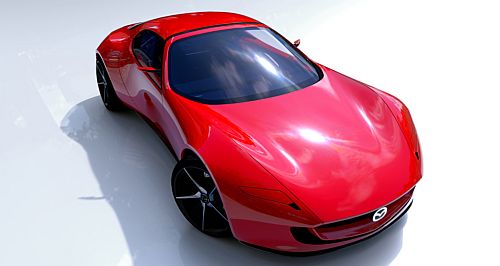News - MazdaMazda working on return of two stroke engineMultiple technologies used in development of Mazda supercharged two-stroke engine22 Jan 2024 AUTOMAKERS, particularly the Japanese, are covering all bases when it comes to climate friendly powertrains – including revisiting forgotten internal combustion engine designs long deemed impractical or high-polluting.
Mazda – known for pushing the boundaries of internal combustion technologies with its rotary engines and combined compression/spark ignition technology (Skyactiv-X) – is reanimating the long-dead two-stroke engine, this time with a supercharged design and a clever exhaust gas regeneration system.
The reappearance of this old and seemingly mothballed design, noted for its putrid exhaust emissions, came to light through a US Patent Office application discovered by American publication Enginelabs.
The outlet noticed Mazda’s application and began investigating the technology, discovering in the process a nifty video that explains how the engine works. The animation and schematic elegantly detail how the system works and what it looks like on paper in layperson’s terms – and there is not an electric assist motor in sight.
Looking to obtain optimum simplicity and efficiency, Mazda has taken various elements from two-and four stroke designs – including from diesels and its current four-stroke engine portfolio – and combined them in a single patent.
Essentially, what we are looking at is a two-stroke engine with four-stroke Mazda Skyactiv valve train technology, high-compression diesel exhaust gas regeneration (EGR) scavenging, and a supercharger. The combined effort send power to the road with every revolution of the crankshaft.
The design prompts a range of questions including how does it work, is it scalable, and is it worth pursuing? According to Enginelabs, the answer is yes.
“Unlike the average two-stroke engine, Mazda’s patent relies on an internal valve design that is part of the combustion process, with no oil mixing being required for operation,” the publication explains.
“A camshaft, as well as both intake and exhaust valves, are utilised, along with a belt-driven compressor like what you see on supercharged two-stroke diesel engines. The intake valve seats are equally unique, in that they are machined to channel compressed air toward the cylinder wall, which results in superior scavenging.
“Basically, as the intake valve opens, exhaust fumes from the previous cycle are forced out the opposite side of the chamber by the fresh air and since this all happens simultaneously due to both the crankshaft and camshaft rotating at the same pace, a two-stroke cycle is maintained.”
In deference to emissions reduction, Mazda has opted to fit a variable camshaft for full EGR and timing control that provides the benefit of exhaust retention within the combustion chamber during low-RPM scenarios resulting in increased compression, better efficiency, and more power.
“Furthermore, this gives the engine enough heat and compression to keep firing without a spark, like a diesel engine,” Enginelabs added.
Like a diesel engine, combustion pressure figures are likely more than 700 bar for this engine, thrice that of conventional petrol designs. Potential benefits are economy gains at lower speeds, cleaner combustion, and an air-to-fuel ratio that hits 14.7:1, at least on paper.
Enginelabs says the result could be an engine that can keep cycling on whatever spent fumes are still inside the combustion chamber under low loads, requiring little more than a splash of fresh fuel and a dash of oxygen to stay active.
Under full throttle applications the supercharger would immediately get to work along with all of the valves, spark plugs, and Skyactiv variable timing systems.
Enginelabs concluded its report by saying the concept of keeping exhaust gas in the cylinder until the last minute for EGR usage, instead of circulating it through the exhaust/EGR/intake system, is pretty damn clever – even if it does negate the EGR nomenclature’s core foundation of recirculation.
It is anyone’s guess as to what real-world efficiency levels and practical implementation might look like, as well as maintenance and production costs.
It all has faint smell of Aussie company Orbital’s two stroke car engine from decades ago that since diverted its activities into the military…
Two strokes have been broadly ignored due to higher fuel consumption, greater output of pollutants, rapid wear characteristics, the need for oil premix/injection and even their sound.
But this hasn’t dissuaded Mazda which already has a revolutionary new application for the rotary engine due out soon and is exploring all powertrain options for future use.
We’ll continue to follow this story with interest.
 Read more18th of January 2024  Track-enhanced Mazdas have aesthetic focusMazda MX-5 and Mazda3 RS models debut at Tokyo Auto Salon, both production ready16th of January 2024  Mazda, Infinitev announce strategic partnershipCollaboration between Mazda and Infinitev to deliver battery lifecycle management services |
Click to shareMazda articlesResearch Mazda Motor industry news |
















Facebook Twitter Instagram